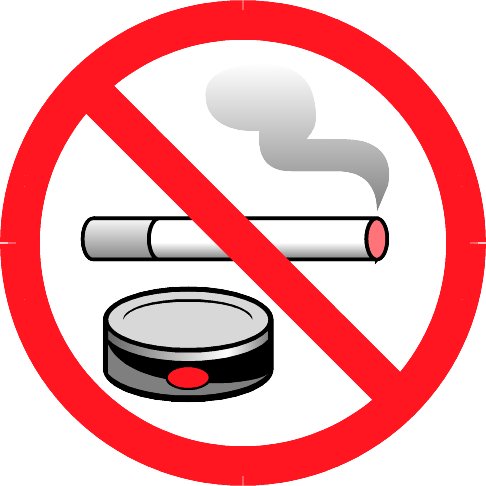At one time we were in agreement with these people since they were specifically targeting inveterate (hard-nosed, long established, deep-rooted) cigarette smokers that refuse to consider trying to quit smoking tobacco. Brad Rodu, DDS and William T. Godshall, MPH paper in the December 2006 issue of the Harm Reduction Journal entitled, "Tobacco Harm Reduction: An Alternate Cessation Strategy for Inveterate Smokers," or Dr. Corol Gartner and colleagues paper in the June 16, 2007 issue of The Lancet concluded that SNUS could produce a net health benefit in inveterate smokers. Dr. Rodu claims that 25 million of the 46 million current smokers in the U.S. are inveterate, “meaning that they are so addicted to nicotine that they cannot quit.” (Rodu B, Jansson C. Smokeless tobacco and oral cancer: a review of the risks and determinants. Crit Rev Oral Biol Med 2004;15(5):252-63.) GALLUP - Among the 21% of Americans who say they smoke, 74% say they would like to give up smoking.
Now it is obvious after observing how Camel SNUS was marketed it would be impossible to limit distribution of smokeless tobacco products to inveterate tobacco smokers. Tobacco companies have an entirely different goal in mind – they are already targeting a much younger crowd of young adults and any kids they can entice along the way - witness the tagline for Camel SNUS: "Pleasure for wherever." and examples of ads R.J. Reynolds placed in community newspapers. Professor John Britton, chair UK's Royal College of Physicians (RCP) tobacco advisory group, "It's their [tobacco companies] job to sell as much tobacco as possible, so they will be targeting non-smokers rather than current ones, that's the worry."
When asked Mr. Godshall how can we limit the distribution of smokeless tobacco products so they don't get in the mouths of kids. He responded: The 1992 Synar Amendment, and laws in every state (and many local jurisdictions) sharply reduced tobacco sales to youth, and the 1998 Master Settlement Agreement sharply reduced cigarette and smokeless tobacco advertising and promotions that had previously targeted youth. Meanwhile, tax hikes on cigarettes and other tobacco products have further reduced youth consumption of those tobacco products. Dr. Rodu like Godshall claims that the tobacco Master Settlement Agreement (November 1998) takes care of the kids.
Synar Amendment (Public Health Service Act 398 in July 1992; Mike Synar was a U.S. Representative from Oklahoma) was suppose to stop kids from buying tobacco themselves. According to Dr. Joseph R. DiFranza of the University of Massachusetts Medical School in Worcester, the federal government has failed to enforce the Synar Amendment. In 1998, 30 states reported no progress in reducing the number of merchants who continue to sell cigarettes to minors, while 16 states reported an increase in violations over the previous year. All 50 states ban tobacco sales to minors but compliance is poor in some states because laws are not enforced. Let's look closer at one state - South Carolina (SC). In South Carolina Synar inspections are a horrible joke from what we have been told. Each year the compliance rate increases as identified youth sales locations decline, with little or no corresponding decline in youth smoking rates. Underage youths can also obtain tobacco from noncommercial sources such as friends, relatives, older adolescents and adults.
The 1998 tobacco master settlement agreement designed to limit the marketing of smokeless tobacco to youth hasn’t been effective, according to a University of Georgia study by Dean Krugman, professor in the Grady College of Journalism and Mass Communication in the online edition of the American Journal of Public Health. At both the beginning and the end of the study period, roughly two-thirds of youth were exposed to smokeless tobacco advertising in magazines (66 and 64 percent, respectively). Krugman is especially concerned about the test marketing of Marlboro and Camel branded smokeless products, which he said will have an instant appeal to youth. “They’re testing products with brand names that have been overwhelmingly successful with young people,” Krugman said. “The power of those brands will create a built-in appeal for their smokeless products.” (Youth exposed to smokeless tobacco ads despite settlement…
Dissolvables: Saving the lives of cigarette smokers
by Brad Rodu, in a response to the Oregon state epidemiologist's concerned about the kids and again Portland was also a test site for Camel SNUS being a test site for the Camel dissolvables. The state's epidemiologist is concerned that dissolvables will be marketed to children. This is nonsense. First, R.J. Reynolds signed the 1998 master settlement with 46 states (including Oregon), agreeing not to "take any action, directly or indirectly, to target youth within
any settling state in the advertising, promotion or marketing of tobacco products."
Marlboro spent $26.1 million in the first nine months of 1999 on advertising in magazines with more than 15 percent youth readers. That is the most of any single brand, and a $5.2 million increase over 1998.
Tobacco companies are not living up to a 1998 agreement to stop promoting cigarettes to children, a study of advertising patterns in 38 national magazines has found.
The companies continue to buy space in youth-oriented magazines to advertise cigarette brands popular with youngsters, Charles King of the Harvard Business School and Dr. Michael Siegel of Boston University said in a report published in the New England Journal of Medicine. Kessler and Myers said the year after the agreement was signed, "the marketing expenditures of the cigarette companies actually rose 22 percent to a record $8.24 billion" and the use of "free gifts that appeal to young people skyrocket."
In 2006 R.J. Reynolds agreed to stop selling candy, fruit and alcohol
- flavored cigarettes in the United States, under an agreement with the attorneys general of 40 states. In marketing these products to our youth, RJR violated the agreement it made with the states back in 1998 to stop targeting kids."
Dr. Rodu representing Star Scientific this time got Maine lawmakers to repeal a ban enacted on the sale of a tobacco lozenge product known as hard snuff.. Star Scientific's tobacco lozenges - Ariva® and Stonewall® Dissolvable Smokeless Tobacco Products. Lawmakers were told they had made a mistake. Star Scientific says the products are widely used by smokers to wean them from tobacco dependence. They also say their products are packaged so they are not attractive to minors. This NOT true.
On Rodu's harm reduction website - when we accessed the site one of the two major headings on the first page of the site is entitled "Reduce the harm from Nicotine use: Go smokeless." - NOT TRUE.. In fact, Indiana State lab tests reveal the nicotine content in Camel dissolvable products can be 60 to 300 percent higher than in one cigarette.
Calfornia attorney general filed a lawsuit in 2005 against UST (the only company to sign the Smokeless national settlement agreement. The suit alleged that UST had violated the 1998 national settlement by promoting Skoal brand through sponsorship of National Hot Rod Association drag racing events at which youths compete.
Now with smokeless tobacco dissolvables kids more than ever will be tempted to try these products. Just the nature of the delivery systems - a lozenge flavored like a little piece of candy, a toothpick loaded with flavoring to disguise the tobacco taste and possibly the worst, the film strips (for your tongue) just like Listerine breath strips - will be very appealing to youngsters. Kids instead of becoming addicted to nicotine at about 14 - will now become addicted at a much younger age. Look at this comparison of Camel Orbs with Tic Tacs - both are flavored, they both can pass for candies and come in attractive packaging..

In these tough economic times, it is more important than ever that we redouble efforts to care for our nation’s most precious resources: our children."
Read more...
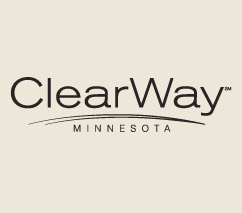 March 19, 2009 - A new survey released today by ClearWay Minnesota(SM) found that an overwhelming majority (72 percent) of Minnesotans support increasing state tobacco taxes. Thirty-seven percent of respondents said the primary reason for their support is that higher taxes will encourage smokers to quit and prevent kids from becoming smokers, and 35 percent cited increased smoking-related health care costs as their primary reason. The survey was conducted by Minneapolis research firm Decision Resources, Ltd.
March 19, 2009 - A new survey released today by ClearWay Minnesota(SM) found that an overwhelming majority (72 percent) of Minnesotans support increasing state tobacco taxes. Thirty-seven percent of respondents said the primary reason for their support is that higher taxes will encourage smokers to quit and prevent kids from becoming smokers, and 35 percent cited increased smoking-related health care costs as their primary reason. The survey was conducted by Minneapolis research firm Decision Resources, Ltd.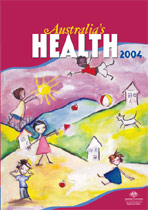 March 19, 2009 - Health leaders are calling for a big tax increase to fight tobacco – after new figures showed Australia’s seven leading causes of death are all linked with smoking. The latest survey from the Australian Bureau of Statistics* shows that the leading causes of death in the decade 1998-2007 were ischaemic heart disease, strokes, trachea/lung cancer, dementia/Alzheimers, chronic lower respiratory diseases, colorectal cancer and diabetes.
March 19, 2009 - Health leaders are calling for a big tax increase to fight tobacco – after new figures showed Australia’s seven leading causes of death are all linked with smoking. The latest survey from the Australian Bureau of Statistics* shows that the leading causes of death in the decade 1998-2007 were ischaemic heart disease, strokes, trachea/lung cancer, dementia/Alzheimers, chronic lower respiratory diseases, colorectal cancer and diabetes.
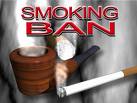 March 19, 2009 - South Dakota Governor Mike Rounds says the need to protect people from secondhand smoke played a role in his decision to sign a measure that bans smoking in South Dakota's bars, video lottery casinos and Deadwood gambling halls. The new law, which takes effect July 1,2009 extends a ban that has outlawed smoking in most public places since 2002 (smoking ban in most workplaces - bars & casinos exempted). Beginning July 1st, smoking will be allowed only in motel rooms and a limited number of cigar bars and smoke shops.
March 19, 2009 - South Dakota Governor Mike Rounds says the need to protect people from secondhand smoke played a role in his decision to sign a measure that bans smoking in South Dakota's bars, video lottery casinos and Deadwood gambling halls. The new law, which takes effect July 1,2009 extends a ban that has outlawed smoking in most public places since 2002 (smoking ban in most workplaces - bars & casinos exempted). Beginning July 1st, smoking will be allowed only in motel rooms and a limited number of cigar bars and smoke shops.
 March 18, 2009 - Reynolds American Inc. today called N.C. Gov. Perdue's proposal to increase cigarette taxes by another $1.00 per pack an "outrageous attack on jobs in our state." "It is incomprehensible that the Governor would introduce a tax hike of this magnitude on top of the historic leap in the Federal tax on cigarettes effective April 1," said Tommy J. Payne, executive vice president of public affairs for Reynolds American Inc. "The Governor has placed as many as 50,000 tobacco-related jobs in our state at risk with this proposal.
March 18, 2009 - Reynolds American Inc. today called N.C. Gov. Perdue's proposal to increase cigarette taxes by another $1.00 per pack an "outrageous attack on jobs in our state." "It is incomprehensible that the Governor would introduce a tax hike of this magnitude on top of the historic leap in the Federal tax on cigarettes effective April 1," said Tommy J. Payne, executive vice president of public affairs for Reynolds American Inc. "The Governor has placed as many as 50,000 tobacco-related jobs in our state at risk with this proposal.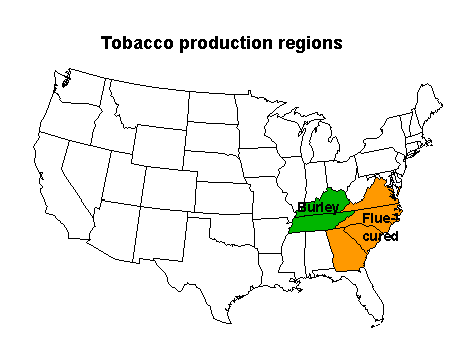
 March 17, 2009 - Convenience Store / Petroleum (CSP) Special Report: this is the fourth a four-part CSP Daily News series on how the industry is reacting to the federal excise tax on tobacco that begins in April.
March 17, 2009 - Convenience Store / Petroleum (CSP) Special Report: this is the fourth a four-part CSP Daily News series on how the industry is reacting to the federal excise tax on tobacco that begins in April. , LA Smoking Examiner, examiner.com.
, LA Smoking Examiner, examiner.com.

